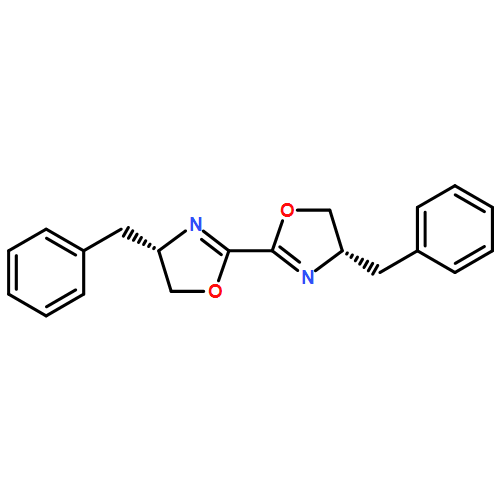BASIC PARAMETERS Find an error
Novel methods for the incorporation of fluorinated subunits into organic frameworks are important in pharmaceutical, agrochemical, and materials science applications. Herein, the first method for the cross-coupling of benzylic α-trifluoromethylated alkylboron reagents with (hetero)aryl bromides is achieved through application of a photoredox/nickel dual catalytic system. The harsh conditions and high temperatures required by conventional Suzuki-coupling protocols are avoided by exploitation of an odd-electron pathway that permits room temperature transmetalation of these recalcitrant reagents. This method represents the first direct and general route for the synthesis of unsymmetrical 1,1-diaryl-2,2,2-trifluoroethanes, thereby providing efficient access to a previously unexplored chemical space.

 (1R,2S)-Methyl 2-(3-methoxy-3-oxo-1-propen-2-yl)cyclohexanecarboxylateC12H18O4Ee = 60%[α]D25 = −49 (c 0.6, EtOH)Source of chirality: asymmetric ring-opening bis(alkoxycarbonylation) reactionAbsolute configuration: (1R,2S)
(1R,2S)-Methyl 2-(3-methoxy-3-oxo-1-propen-2-yl)cyclohexanecarboxylateC12H18O4Ee = 60%[α]D25 = −49 (c 0.6, EtOH)Source of chirality: asymmetric ring-opening bis(alkoxycarbonylation) reactionAbsolute configuration: (1R,2S) (1R,2S)-Methyl 2-(3-methoxy-3-oxo-1-propen-2-yl)cyclooctanecarboxylateC14H22O4Ee = 45%[α]D25 = −11 (c 0.1, EtOH)Source of chirality: asymmetric ring-opening bis(alkoxycarbonylation) reactionAbsolute configuration: (1R,2S)
(1R,2S)-Methyl 2-(3-methoxy-3-oxo-1-propen-2-yl)cyclooctanecarboxylateC14H22O4Ee = 45%[α]D25 = −11 (c 0.1, EtOH)Source of chirality: asymmetric ring-opening bis(alkoxycarbonylation) reactionAbsolute configuration: (1R,2S) (2S,3S)-Dimethyl 2,3-bis((benzyloxy)methyl)-4-methylenepentanedioateC24H28O6Ee = 28%[α]D25 = +6 (c 1.3, EtOH)Source of chirality: asymmetric ring-opening bis(alkoxycarbonylation) reactionAbsolute configuration: (2S,3S)
(2S,3S)-Dimethyl 2,3-bis((benzyloxy)methyl)-4-methylenepentanedioateC24H28O6Ee = 28%[α]D25 = +6 (c 1.3, EtOH)Source of chirality: asymmetric ring-opening bis(alkoxycarbonylation) reactionAbsolute configuration: (2S,3S) (3S,4S)-Dimethyl 2-methylene-3,4-bis((trityloxy)methyl)pentanedioateC48H44O6Ee = 42%[α]D25 = +5 (c 0.5, EtOH)Source of chirality: asymmetric ring-opening bis(alkoxycarbonylation) reactionAbsolute configuration: (3S,4S)
(3S,4S)-Dimethyl 2-methylene-3,4-bis((trityloxy)methyl)pentanedioateC48H44O6Ee = 42%[α]D25 = +5 (c 0.5, EtOH)Source of chirality: asymmetric ring-opening bis(alkoxycarbonylation) reactionAbsolute configuration: (3S,4S) (3S,4S)-Dimethyl 2-methylene-3,4-bis((triphenylsilyloxy)methyl)pentanedioateC46H44O6Si2Ee = 48%[α]D25 = +6 (c 1.5, CHCl3)Source of chirality: asymmetric ring-opening bis(alkoxycarbonylation) reactionAbsolute configuration: (3S,4S)
(3S,4S)-Dimethyl 2-methylene-3,4-bis((triphenylsilyloxy)methyl)pentanedioateC46H44O6Si2Ee = 48%[α]D25 = +6 (c 1.5, CHCl3)Source of chirality: asymmetric ring-opening bis(alkoxycarbonylation) reactionAbsolute configuration: (3S,4S) (2S,3S)-Dimethyl 2,3-bis((tert-butyldiphenylsilyloxy)methyl)-4-methylenepentanedioateC42H52O6Si2Ee = 51%[α]D25 = +3 (c 1.9, EtOH)Source of chirality: asymmetric ring-opening bis(alkoxycarbonylation) reactionAbsolute configuration: (2S,3S)
(2S,3S)-Dimethyl 2,3-bis((tert-butyldiphenylsilyloxy)methyl)-4-methylenepentanedioateC42H52O6Si2Ee = 51%[α]D25 = +3 (c 1.9, EtOH)Source of chirality: asymmetric ring-opening bis(alkoxycarbonylation) reactionAbsolute configuration: (2S,3S) (1S,4R)-2-((1S,2R)-2-((((1S,4R)-4,7,7-trimethyl-3-oxo-2-oxabicyclo[2.2.1]heptane-1-carbonyl)oxy)methyl)cyclohexyl)allyl 4,7,7-trimethyl-3-oxo-2-oxabicyclo[2.2.1]heptane-1-carboxylateC30H42O8Ee = 100%[α]D25 = −11 (c 0.1, EtOH)Source of chirality: asymmetric ring-opening bis(alkoxycarbonylation) reactionAbsolute configuration: (1S,4R),(1S,2R),(1S,4R)
(1S,4R)-2-((1S,2R)-2-((((1S,4R)-4,7,7-trimethyl-3-oxo-2-oxabicyclo[2.2.1]heptane-1-carbonyl)oxy)methyl)cyclohexyl)allyl 4,7,7-trimethyl-3-oxo-2-oxabicyclo[2.2.1]heptane-1-carboxylateC30H42O8Ee = 100%[α]D25 = −11 (c 0.1, EtOH)Source of chirality: asymmetric ring-opening bis(alkoxycarbonylation) reactionAbsolute configuration: (1S,4R),(1S,2R),(1S,4R)

